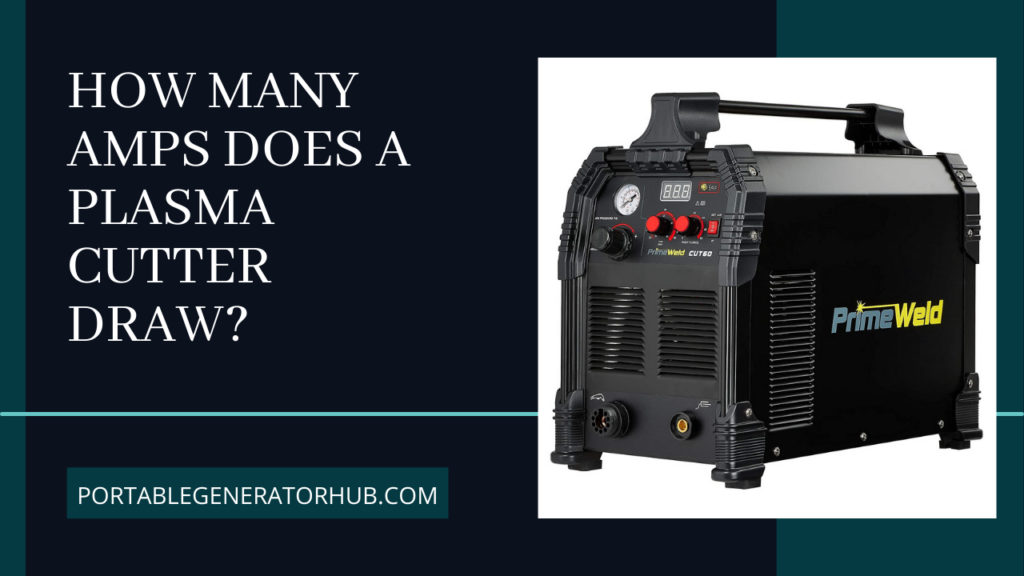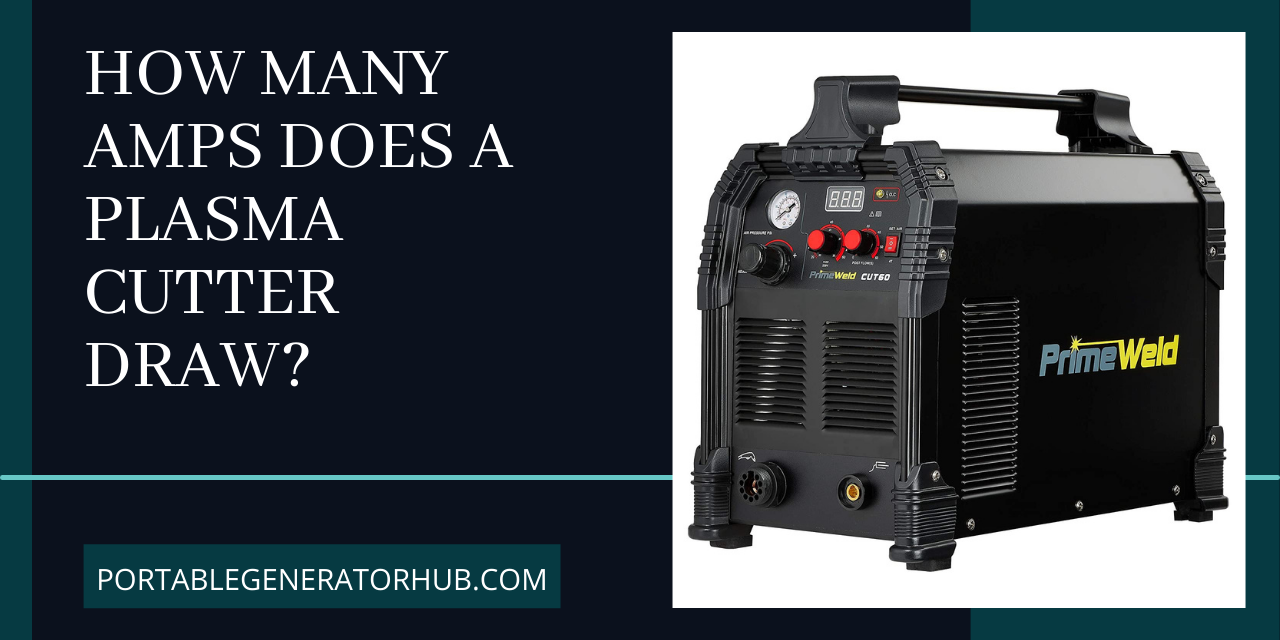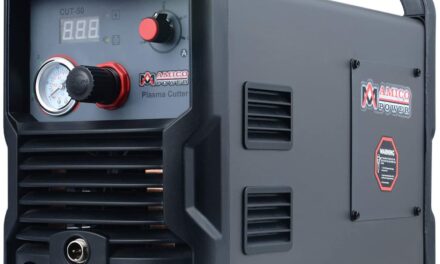
Plasma cutter machines can be your daylight saver as well as it can be a nightmare to you if not well maintained. To prevent awkward results, then all discretion has to be met.
In fact, it’s expedient to learn in detail the flexibility significance of plasma cutters. That’s what would expedite your quests in metal fabrications.
Moreover, one of the fundamentals that you ought to learn about is the control of the amps. You see, choosing the most suitable amps before gouging, piercing, beveling, and cutting holes in a metal sheet is the most palatable way of getting a clean job done.
And guess what? Inquiring How Many Amps Does a Plasma Cutter Draw when arcing metals is the perfect way of getting everything started.
The amps have to be changed as you fabricate different metals of varied tensile strengths into different shapes. Electrically ionizing the metal for smooth cutting can be perfect by adhering to the fundamental rules alone.
Regardless of the thickness of the metallic sheet, this article can serve as the right guard for your instincts. Check out the points below to learn more about the subject matter.
How Many Amps Does A Plasma Cutter Draw? 4 Steps
1. Read The Manual
All products have their electrical requirements. Find yours by checking the sides or the back of the unit. It’s the information that would expose you to the basic setup of the plasma cutter.
Adequately setting it up to the appropriate circuit breaker (or as the case may be) could prevent underly or overly ringing of the temperature of the compressed gases.
Furthermore, provided a low power is generated through the circuit and causes underperformances, it will not damage the plasma cutter but limit its functions on surfaces. Meanwhile, it could lead to overheating and eventually damage the plasma cutter itself. Indeed, that’s why the manual can serve as a good guide.
The manual would help you make the appropriate correction of the functions when necessary. Some manufacturers do an excellent job describing the debility and ability of a plasma cutter and the amount of current it does during arc cutting, gouging, and piecing.
2. 40amps for 3/8” Thick Metallic Sheet
Unlike welders, plasma cutters can cut ferrous and non-ferrous sheets. Set the amperage at 40amps to get the shape out awesomely. And, provided you’re fixing the 40amps breaker by two 20amps, then do it in series so that you can attain the 40amp.
Notwithstanding, you’d need to preset the amperage before you start using the plasma torch to arc cut the metal. Now, the voltage will determine the power output that the cutter can release to cut the metallic workpiece.
For instance, a 40amp multiplied by 110V will give a cutting power output of 4400W that can cut a 3/8” of steel. Higher voltage will provide higher performance as it somewhat reduces the current rate requirement for working on a thicker metallic sheet actually.
3. 50amps for a ½” Thick Metallic Sheet
50amps is a higher amperage compared to the former. This meets the standard that states a higher amperage should be opted for when one switches over to a thicker workpiece.
Aluminum has better ductile strength and weak bonds, making cutting with a plasma cutter easier. Stainless steel has more strength because it’s an alloy, while steel is harder.
Possibly, you can use amperage as low as 12amp to give either severance cut or clean-cut, but you’d need to increase the amperage level to 50amp if you intend to work on more challenging surfaces like steel, titanium, and tungsten. The amperage setting shouldn’t counter the duty cycle of the machine. The two should be considered jointly.
4. Kerfing a 1” Thick Metal With Amperage
Plasma cutters can gouge and cut metals of various thicknesses and thinness. Speed is considerable when cutting metal of low tensile strength, such as aluminum.
The higher the speed, the quicker your result. At this point, lowering the amperage won’t be an issue because the metal is thin. However, you’d need to lower the speed while increasing the amperage to cut with high discretion on thick metals such as steel.
On the other hand, pressure regulation should fall between the 55PSI and 77PSI. It’s can only be lowered when the amperage is lower than expected so that it won’t damage the torch of the plasma cutter.
Consequently, if the lightning fragments are falling perpendicular at the top of the workpiece, then you’re not actually doing a great job.
The fragments should be falling between 15-degree and 20-degree to the targets on your workpiece. Also, the position of the electrode against the workpiece should be 45 degrees to get a perfect cut.
What Size Breaker Do I Need For A 60 amp Plasma Cutter?
Amps breakers are recommended for portable plasma cutters. They are recommended to homeowners who intend to use an amp breaker to regulate the duty cycle of their units. Nonetheless, one can use a single 60amp breaker and two 30amp breaker poles; it all depends on what one wants.
What Current Does A Plasma Cutter Use?
A plasma cutter requires amperage to propel the functionality of the temperature generation of the plasma cutter. It aids the air compression and pressure that runs through the touch to convert the compressed nitrogen and inert gas into an arc cutter—the current rates required to vary as long as there are differences in the thickness of the workpiece.
How Thick Can a 30 amp Plasma Cutter Cut?
The amperage is not alone. The voltage of the power source and the duty cycle capacity of the plasma cutter are factors that could determine the flexibility of using the plasma cutter. Nevertheless, it should cut a ½” thick steel in a DC circuit and 3/8” on an AC circuit.
How Do You Adjust The amp On A Plasma Cutter?
The amp regulator is at the side of the unit. You can use the machine’s manual to check out the design of the product that you’ve purchased. You could even find a sticker around the encasement of some units. Check the sticker if you find any to learn about the capacity of the plasma cutter and the method of its use.
Final Thoughts
The control of amps is a necessary factor when using a plasma cutter. However, overdoing or underdoing the control is what one wants to prevent, and that’s why this article is a necessary one to get the best. You can use the details here to make your effort counts on any tasks you’ve embarked on already.






